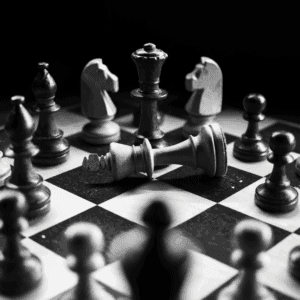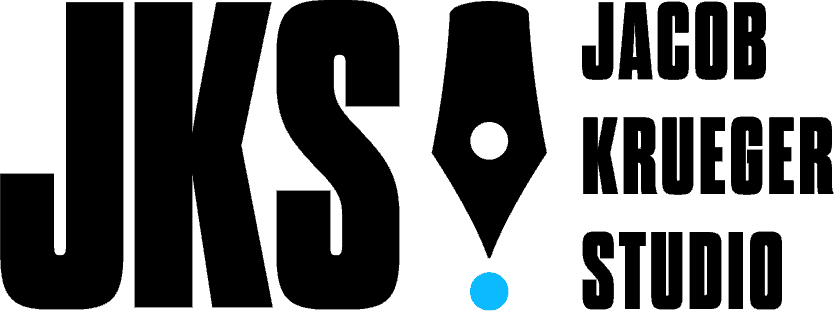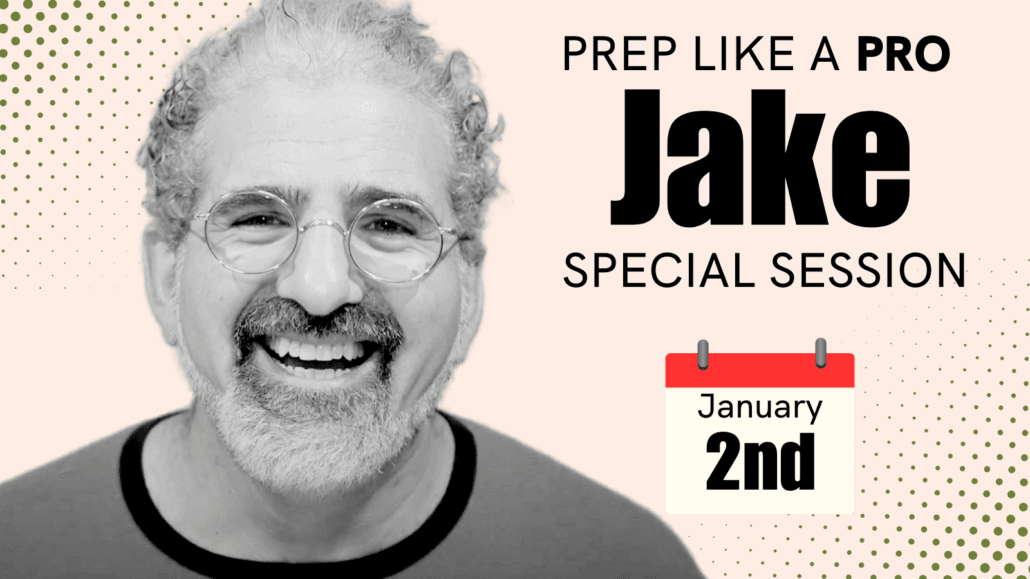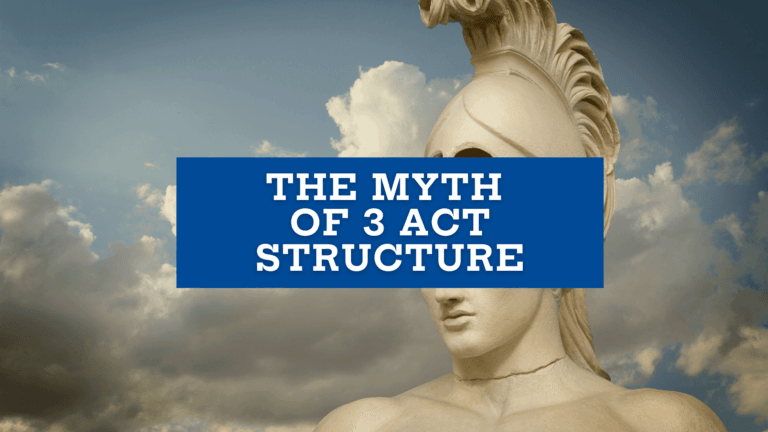The Queen’s Gambit: Writing the Limited Series
Today we’re going to be talking about The Queen’s Gambit by Scott Frank and Alan Scott. This is actually the first time since Chernobyl that we’ve looked at a limited series. So, I want to talk a little bit about limited series, how they work, and also how they’ve changed over the years.
I actually came up in the world of limited series (or miniseries, as we used to call them). Back in those days, when we thought about a project that could become a limited series, we thought about giant, sprawling, epic stories with a tremendous amount of plot– so much plot, so many subplots, so many twists and turns, so many characters, such huge historical scope, that you couldn’t fit it into a movie.
When we thought about miniseries, back in the day, we were looking for stories about topics that people already had a feeling that they knew about, but that maybe they didn’t know the real story. Something really big, because miniseries were expensive and hard to sell and hard to make. The truth is, until very, very recently, we were looking for stories a lot more like Chernobyl than The Queen’s Gambit.
When you look at The Queen’s Gambit, you see that shape, scope and structure when writing a limited series (or miniseries) has completely changed.
The Queen’s Gambit actually started as a novel. It bounced around Hollywood for about 30 years. And the first adaptation as a feature film was written about 10 years ago. And although it was written by the same writer, Alan Scott, who would eventually pen the limited series, they  simply could not sell it.
simply could not sell it.
In fact, the response they kept getting when they pitched it was “nobody’s going to be interested in chess! This story is too small.”
It wasn’t until after doing Godless that Scott Frank came up with the idea to reimagine The Queen’s Gambit as a limited series.
And what’s really interesting is that they conceived of it not as one of those traditional, epic, plot driven, historical limited series that had always sold in the past. But instead as a much quieter approach to a limited series, that really allows you to drop into the eyes of a character.
Back in the day when I was coming up in the industry, if you pitched The Queen’s Gambit as a limited series, you would have been laughed out of the room.
There are many things about the structure of The Queen’s Gambit that simply shouldn’t work according to Hollywood convention. And yet today, it’s become the most popular limited series in Netflix’s history.
So, today I’ll be talking about what’s unique and original about the structure of The Queen’s Gambit, and how these filmmakers flew in the face of the traditional Hollywood wisdom to make something that was greater than the sum of its parts.
When you look at the elements of The Queen’s Gambit, they don’t exactly suggest a blockbuster movie, much less a successful limited series.
It’s about chess, which unlike football, or baseball, or any of the other typical sports about which movies get made, is a sport that nobody knows anything about!
It’s a sport that you can’t follow unless you’re an expert. Which makes it really hard to cheer for the character like you would in a football movie. You don’t even know where the end zone is! Unless you’re Bobby Fisher, you can’t even look at the board on screen and realize “she’s got it! Checkmate!”
The Queen’s Gambit is essentially a sports movie that’s not a sports movie. A movie based around a game where the audience can’t tell if you’re winning.
You also have another really interesting thing going on, which is a character, who, for the most part, doesn’t form relationships.
Beth’s primary relationship is with chess. It’s with an inanimate object. It’s the only thing that’s steady through over six hours of filmmaking. The other characters come and go, appear and disappear.
Most structure in movies, miniseries and TV shows grows from relationships between people. But it’s actually central to Beth’s character in The Queen’s Gambit that she struggles to connect with people. And that ends up surprising all of our instincts about the structure of The Queen’s Gambit.
For example, if you look at the first episode, it looks like this is going to be a movie about her relationship with Jolene: two orphans who are never going to be adopted. Except Jolene disappears for multiple episodes. She’s gone. Not just gone from the movie, but gone from Beth’s mind. She’s not shaping and affecting Beth. Because Beth isn’t connecting to people.
Similarly, we meet the ”Ms. Hannigan” character at the orphanage, and we think we know where this is going. But no, that’s not what the story is going to be about either. The woman who runs the orphanage is going to disappear until the end of the miniseries. And she’s not going to end up having a profound effect on Beth’s life, except for being the person who introduced her to tranquilizers.
You think about the janitor, and you think this is going to be a relationship between this man who can’t communicate and this incredibly  vulnerable, but also closed down, genius little girl. It’s going to be a complicated relationship between the two of those people. But he also disappears for the rest of the movie, again not just from the plot, but from Beth’s mind. Beth loses track of him. The only time she reaches out to him is when she needs a few dollars. She doesn’t think about him again until she goes home back to the orphanage. So, this is another character who comes and goes.
vulnerable, but also closed down, genius little girl. It’s going to be a complicated relationship between the two of those people. But he also disappears for the rest of the movie, again not just from the plot, but from Beth’s mind. Beth loses track of him. The only time she reaches out to him is when she needs a few dollars. She doesn’t think about him again until she goes home back to the orphanage. So, this is another character who comes and goes.
The Queen’s Gambit is also not a love story. Yes, there are men that Beth has sex with, there are men that she dates. You start to think, “Oh, it’s going to be her relationship with this dude.” No, it’s not. ”It’s going to be her relationship with that dude.” No, it’s not. “It’s going to be her relationship with the chess master.” No, it’s not.
Her primary relationship remains with the chessboard, remains with getting high or not getting high. Her primary character relationships come and go just like the characters in the movie.
This is, technically, what most people would normally think of as… wrong.
Normally when we build a movie, and especially when we build a miniseries, we’re building a continuous relationship, a long, deep relationship that’s going to develop over time.
If you think of a limited series like Chernobyl, for example, the relationship between those two men drives the whole movie. Sure, there’s a couple of subplots that weave in between, as I discussed in my Chernobyl podcast, but what we’re really doing is going really deep in a relationship for six hours.
In The Queen’s Gambit, none of the relationships develop the way we expect. Characters come in for an episode or a couple of episodes, and then they disappear. This is contrary even to the way we normally think about ongoing TV series.
When you think about a TV comedy series, or a TV drama series, or a Dramedy Series, or even a Web Series, you think about a world where you’re trying to get characters together who can’t get away from each other, so they have to deal with each other and go on a journey together.
But in The Queen’s Gambit, the characters don’t stick. You meet Mom and think, “Oh, Okay, I get it, she’s going to be adopted into this very unhappy relationship. And horrible things are gonna happen with this awful dad and this alcoholic, unhappy mom.”
But those things end up not happening. Dad goes away. And though he’s not a great influence, he’s not a terrible one. He does let her keep the house… kind of. He’s not the relationship. And even mom, who ends up becoming the primary relationship in her life, even mom comes and goes. Even mom doesn’t remain a staying force in her life.
All of these things are not supposed to work. This is not supposed to be how you build a limited series.
If you want to go one level further into how The Queen’s Gambit breaks the rules, think about all the “high stakes” plot, all the exciting twists and turns that you’re anticipating, which simply refuse to happen in The Queen’s Gambit.
The moment we meet the headmistress at the orphanage, the “Ms. Hannigan” character… we know exactly who she is.
But all the drama, and the chaos and suffering that we expect between those two characters, the power struggle, it doesn’t happen.
As soon as you send this little girl down to that basement with that janitor, you’re thinking, “Oh no, it’s either going to be sexual abuse or something else dark and complicated.” But it doesn’t happen.
As soon as you send her to a family as messed up as her adopted family, you think, “Oh no, it’s going to be about the toll that these people take on her.” But it doesn’t happen.
 As soon as they give her this disconnected, stiff, alcoholic, unhappy mom, you think, “Oh no it’s going to be about the psychic torture of that relationship.” It doesn’t happen. She’s actually not so bad. And although mom is part of creating the drug dependency, the alcohol dependency, she’s not the sole cause of it, and she’s not the end of it. Even her death is not the thing that really causes it to happen or to stop happening.
As soon as they give her this disconnected, stiff, alcoholic, unhappy mom, you think, “Oh no it’s going to be about the psychic torture of that relationship.” It doesn’t happen. She’s actually not so bad. And although mom is part of creating the drug dependency, the alcohol dependency, she’s not the sole cause of it, and she’s not the end of it. Even her death is not the thing that really causes it to happen or to stop happening.
Even when Beth finally goes to Moscow, and she’s there with the State Department guy who warns her to look for signs of defection, and you think, “oh, I get it, that’s The Queen’s Gambit, it’s going to be some kind of Russian defection story.”
That doesn’t happen either.
In fact, what does happen is probably the most predictable thing: she finds her way out of her addiction. And she defeats the big Russian chess player, the best in the world.
All the things that are supposed to happen, all the drama that we think we’re supposed to create… all that drama doesn’t get created.
In fact, every time the idea that some kind of “high stakes” drama could start to come up in The Queen’s Gambit, the writers steer away from it. Which goes to show you something very important: no one can tell you what has to happen in your movie.
I don’t know if The Queen’s Gambit would have been the huge success it is today, if it had come out pre-Covid.
Aside from Anya Taylor-Joy’s absolutely tremendous performance (her ability to use her eyes to communicate meaning is astonishing), I think one of the reasons that The Queen’s Gambit is such a success is because we, as Americans, as people of the world, needed an escape from the drama. We needed something that let us feel good for a little bit. We needed something that didn’t go to the darkest or the worst place. We needed something that looked pretty, and took us on a kind of journey that made us feel hopeful at a time when we feel really dark.
That’s such an important lesson, because I’ve seen so many talented writers try to time the market. They try to write the hot script, the thing that they think is going to sell. I’ve seen so many talented writers try to follow the rules thinking that the rules are going to get them there.
The truth is, by the time you’re done following whatever the rules of screenwriting are today, the rules will have changed.
The rules get created by a vast environment that you have very little control over. 10 years ago, The Queen’s Gambit was an impossible movie, that was too small to even be a movie, about a topic that absolutely no one was interested in. Today it is Netflix’s highest viewed limited series of all time, and has spawned a whole generation of interest in chess.
Pre-COVID, The Queen’s Gambit was too light. Mid-COVID it’s just light enough.
You’ve got to write the movies, you’ve got to write the series, you’ve got to write the miniseries or limited series that comes out of you. Then you have to find the form that allows it to work.
You’ve got to tell the stories that you want to tell. Then you have to figure out, despite all the things that maybe I’m doing wrong, despite all the things that I’m doing that don’t conform to what you’ve been told or what you’ve read in a screenwriting book, how are you going to make what’s beautiful and good about your script actually work?
How are you going to make that thing so good, that it transcends those other friction points?
What’s a friction point? A friction point is the reason that someone says, “no” to your movie. A friction point is the excuse people used to say, “No, I pass on this movie, this series, this miniseries.”
The most obvious friction point, at the beginning of The Queen’s Gambit’s endless journey to the screen, was chess. Even the director has  admitted chess is the least visually exciting sport that you can follow.
admitted chess is the least visually exciting sport that you can follow.
Friction point: Sorry, we pass, it’s about chess, dude.
Friction point: Sorry, the characters, they come and go… build some relationships.
That’s the kind of advice you’d get from a coverage reader. It’s also the advice that would destroy The Queen’s Gambit.
Because The Queen’s Gambit is about a character who cannot connect. That’s actually what we’re watching. The journey, the reason that the ending is powerful, with her dressed up in her white queen outfit, wandering amid the Russian chess players, is because we’re watching her find the one community that she actually connects with. We’re watching this person who can’t connect, find connection.
If you follow the typical advice, if you tried to sand out the friction of that friction point until no one objected to it, you would end up with a limited series that undid its own premise.
You have to remember that the rules grow out of what you’re trying to do. The rules aren’t a bunch of written in stone commandments for you to follow. The rules need to serve your story.
Every good screenplay is going to have friction points. Every good story is going to have reasons why people say no. You have to be so careful who you take advice from. Because the friction points of our story, or your limited series, or your movie, or your show– these are the things that people who don’t know what they’re doing are going to object to, that coverage readers are going to make suggestions about.
And unfortunately what you’re going to hear are all the standard suggestions:
Hey, maybe the creepy guy in the basement should molest her. Hey, what about that “Ms. Hannigan” character? Hey, maybe more messed up stuff should happen between her and her mom. Hey, why don’t you build a love story?
You’re going to get a ton of suggestions around your friction points. And if you accept those suggestions, they’re going to destroy your script.
They’re going to take what’s beautiful about your movie, and they’re gonna dial it down to a place where you get good coverage, but no one gets passionate, where you get to the next round of the festival, but you don’t get to the final round, where people say, “sure what else have you got?” but they don’t say, “I need to make this.”
Although they do make your movie hard to sell, friction points are also what make people passionate about it. The friction points are the things that distinguish it.
That doesn’t mean you should create friction points for their own sake.
If you’ve got a movie that’s full of drama, and action, please have fun with it!
But remember that the form of your film, the form of your miniseries, the form of your limited series, the form of your TV show, needs to follow the function. It needs to grow out of what you’re trying to say, who these characters are.
Once you know what your friction points are, the answer is never to smooth out your friction points, the answer is instead to feature them.
Now, if the friction point ends up not being that important to your theme, by all means get rid of it. If the friction point ends up not being that important to your character, by all means get rid of it. If the friction point turns out not to be that important to you, by all means get rid of it. Don’t bite off your nose to spite your face; don’t make it harder than it has to be.
But if the friction point is important for you, then you want to find a way to allow the movie to become about the friction. You want that friction point to become the important thing in the movie, or in the limited series or in the TV show.
And if you look at The Queen’s Gambit, you can see that that’s exactly what the writers did.
What’s powerful about The Queen’s Gambit is not what happens. It’s what doesn’t happen. It’s the gap between your expectations of darkness, and the light that this troubled character keeps on finding, even as she navigates her own self destruction.
What made it work?
The first thing is they have a character with two exceptionally strong wants. And these two strong wants both complement and get in each other’s way.
Despite the fact that it seems like the writers of The Queen’s Gambit are breaking all the rules and writing a relationship free screenplay, the truth is, all characters have relationships, it just happens that this character’s relationship is with chess, and with drugs.
Both of these relationships start when she is a child. And for this character, those relationships are tied together.
It is the drugs that allow her to escape her conscious mind and to see the chessboard in the sky. It is the drugs that allow her to be who she is as a chess player. She doesn’t know how to be sober. She hasn’t known how to be sober since she was a child.
But it’s also the drugs that end up leading to sabotage of her career. The same thing that’s giving her this gift is also taking it away.
Beth’s very simple journey is that she needs to learn to play sober. She needs to learn to see sober. She needs to learn to do her art sober.
Both of those wants are really strong. The obstacles to both of those wants are really strong.
We know that she is the ultimate talent, we know from the very beginning that we’re never going to see a better chess player than Beth Harmon. However, because she has these two competing wants, her want to get the pills, her want to get drunk, and this want to win at chess.
This want that goes even beyond winning, because she’s addicted to winning. But beyond that tangible objective of winning, there’s something else that’s much deeper, this desire to know, to understand, to see.
You have these wants that are driving her, this want for chess, with all these obstacles: from the mom who won’t buy her a chess board, to having to learn in the basement, to being a woman, to not being respected, to not having money, to undermining her own career, all these conflicts, these obstacles that get in the way and force her to make choices. This gives you structure.
Similarly, there are challenges to getting the drugs, like when the orphanage stops distributing the drugs to the kids, and she has to climb in  and sneak in and steal the drugs. And later, when she discovers her mom takes the same pills, and realizes she can sneak them that way, and that their shared addiction can tie them together. So there’s a relationship that’s developing there, there are obstacles that she’s navigating, and these obstacles relate to choices.
and sneak in and steal the drugs. And later, when she discovers her mom takes the same pills, and realizes she can sneak them that way, and that their shared addiction can tie them together. So there’s a relationship that’s developing there, there are obstacles that she’s navigating, and these obstacles relate to choices.
There are men who are in love with her. And these men are both aids and obstacles, because there is not one of them that she really is in love with… the one she can come closest with is gay. They are aids, in that they can teach her chess, and they are obstacles in that they are going to want something from her that she cannot get back. Because her primary love is chess. And because she struggles with human connection.
So the pressure is between the love story that wants to happen, and the choices that she keeps on making, and the biggest obstacle of simply being smarter than everybody else, of simply being so smart, that nobody can keep up with her. Even the people who are teaching her are ultimately disappointing, so she has to navigate the loneliness of that.
As you can see, the first thing that makes The Queen’s Gambit work, is that despite breaking every other rule, it follows one really simple one, which is a character has got to want things. And those things have got to be really hard to get.
They’ve got to be so hard to get that the character has to keep making new choices. Choices that change them, choices that mess them up, choices that transform them and allow them to transcend.
Despite all the ways that The Queen’s Gambit seems to be totally flaunting the rules, this one simple lesson stays with you, that the character is going to want stuff and it’s gotta be hard to get.
The second thing that The Queen’s Gambit does that allows it to transcend its friction points is the way it captures the world.
World is so important. And it’s one of those amorphous things that sometimes we don’t know exactly how to use.
We know that the world of every story is super important. But in a lot of movies, a lot of lesser movies and a lot of lesser limited series, and even a lot of lesser TV shows, the world is a barely realized thing. It’s there, but it’s not there.
If you look at The Queen’s Gambit visually, you can see the way they amplified the world, how they amplified the period, how every location is incredibly beautiful, but also incredibly interesting.
This is another trick you can take from The Queen’s Gambit: really think about where you are setting your scenes. Really think about what your scene looks like… but not like a set designer. Like a screenwriter.
Ultimately, just like they did for The Queen’s Gambit, you’re going to bring in brilliant designers who are going to create your interiors and your exteriors, and who are going to make sure your script looks right.
But think about how you are visualizing the world yourself and how the character is interacting with that world. What are the things they’re doing in that world that are going to bring that world to life? Think of the visual imagery.
If you’re a director, then you can even think about The Queen’s Gambit used the visual eye-candy of world to make up for some of its limitations.
By amplifying the poetic qualities of the world, the writers and director of The Queen’s Gambit made up for some of the spectacle that we would normally expect to see in a limited series that wasn’t there.
We didn’t have the plot spectacle that we’re used to in miniseries. But we did have the visual, cinematic spectacle, with everything from the costumes to the sets and the way that the characters moved through those worlds and those locations.
If you take my Write Your Screenplay class, we talk about isolating visual moments of action to hypnotize the reader.
Think about the way The Queen’s Gambit hypnotized you visually, to the point where you barely even noticed that in so many scenes, there is, quite frankly, not a hell of a lot going on.
By amplifying this one really cool thing and by playing that drumbeat of want, obstacle, completion, the piece elevates itself above being this tiny little story set in the offbeat world of chess.
There’s a final element which is tied together with this: Beth is a character whose main struggle is internal. But in The Queen’s Gambit, the writers found a way to externalize her internal struggle.
Beth’s main struggle is an internal struggle with drugs and alcohol, and an internal struggle to decide if she’s actually good enough, or deserving enough.
Her main journey happens on the inside, which works great in a novel, but in a movie, in a limited series, in a TV show, we must externalize the internal. We must take the internal thing and take it out of the character.
There are a couple of brilliant ways that the filmmakers did this.
The first and most obvious one is the way that they visualized those chess pieces. If you think of the visual eye-candy of watching Beth play chess in her mind, if you think of the image of her ripping open the canopy of her bed in her new home, so she can see the ceiling, if you think about her externalized struggle to unlock those chess pieces with drugs or without drugs, you can start to see how by externalizing this internal thing the filmmakers gave you something to root for.
You couldn’t root in the traditional sports movie way for Beth to win because you couldn’t tell if she was winning.
Rather, you could root for her to see.
Even though The Queen’s Gambit departed a little bit from the real rules of chess, where characters don’t actually speak to each other during a game, by allowing those conversations to happen, by reading Beth’s face and the interactions between her and the other chess players, by focusing on the interplay around the game, and her personal journey around the game, the writers gave you something to root for.
It allowed you to understand where the “end-zone” was: is she seeing it or not? Is she able to visualize or not? Are the pieces appearing for her or is she stuck in her head?
Just like Beth, so many of us, as artists, end up stuck in our heads.
We end up believing we have to do things the way we were told, or the way we’ve always experienced them. We convince ourselves that there’s only one way we can get to our gift– whether it’s something destructive, like drugs or alcohol, or something beautiful, like being captured by the muse. Whether it’s following a formula that worked before, or only writing things that actually happened to you, or only writing your own projects or not being able to take notes from other people.
We all have these beliefs that either allow us to access our gifts, or feel like we’re cutting off from them.
The beautiful thing about The Queen’s Gambit is the way that Beth’s journey is like ours. Our journey as writers, just like Beth’s, is very simple, which is to take this raw and shapeless thing inside of us, this raw gift that we writers call voice, and that Beth calls chess… to take that internal thing that resides inside of us and wants to come out and learn how to harness it, not just when we’re out of control, or in the mood, or when it happens to come to us. But to learn how to actually control and shape our gift, to learn how to actually step into it.
That’s one of the reasons that I love to be a teacher. They say that you can’t teach talent, and maybe that’s true. I’ve always felt, as a teacher, that talent is so unimportant. Beth happens to be a character who has a lot of talent, but what we’re actually watching is not her talent, what we’re actually watching is her desire and her process.
What I’ve always found working with writers, is every single one of us has a voice. Our voice leads to friction points. So, starting when we’re kids in school, we learn to dull that voice. We learn to hide that voice. Sometimes we learn that there are only certain ways that we can unlock it and let it get free.
What I love about teaching what I do as a writer, and also what I’ve been learning to do over a lifetime for myself, is not to be dependent on external circumstances to unlock that gift, but actually to become more comfortable with your own friction points. To actually learn how to harness your friction points.
These odd things about you, these friction points that you’re ashamed of or that you feel inadequate about, finding your voice is about realizing that they are actually your gift. And your actual journey as an artist is to learn how to externalize them, to learn how to get them out, not when they want to come out, but when you need them to come out, to learn how to shape them and in that way to take control of your artistic life.
And in that way, you learn to root for yourself.
Edited for length and clarity
Want to learn more? Come check out our FREE Quarantinis Happy Hour every Thursday night, where a Jacob Krueger Faculty Member and I go deep on some aspect of screenwriting, answer questions, and share feedback and writing exercises. Take the next step and sign up for one of our online Screenwriting, TV Writing, Playwriting or Comics Writing classes. Or give yourself a film school level experience at a tiny fraction of the price and on a schedule that fits your real world life with our professional level Protrack and Workshop programs.



